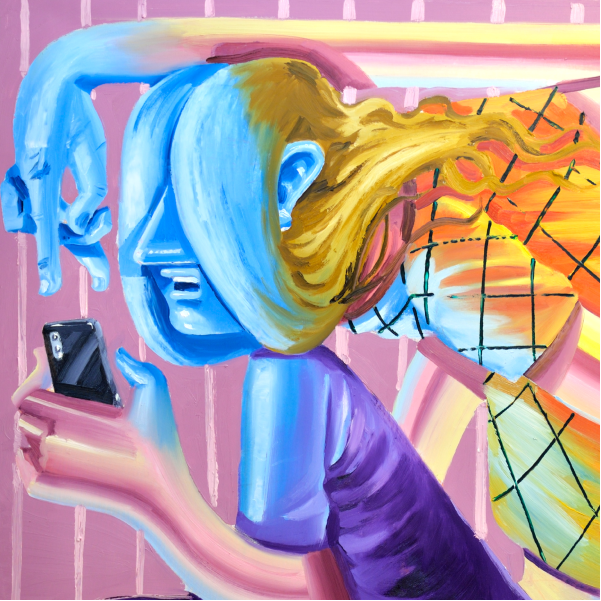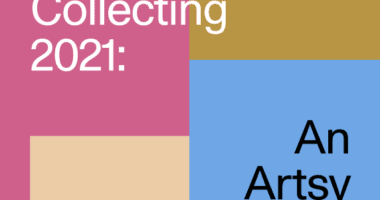The Artsy Asks Series
Experts answer the most important questions for galleries today.
Who
Artsy’s Head of Trust & Safety, Andrew Boos, uncovers the top risks for galleries selling online today.

Andrew Boos, Artsy's Head of Trust & Safety.

Ákos Ezer, Facetime, 2020. Courtesy of Gallery Droste.
From 2019 to 2021, online art sales more than doubled across the globe, going from 9% of total art sales to 20%. However, as the number of collectors buying online increases, so does the number of scammers posing as collectors.
Below, Andrew Boos, Artsy’s Head of Trust and Safety, shares the top security risks for galleries selling art online today — and what you can do to protect your business.
Threat #1: Phishing Schemes
You or your collector could receive an email appearing to be from a legitimate website, asking you to log in. The email is actually an attempt to get you to give up your password so a fraudster can use your credentials to log into one of your accounts. Most of the time, they will target your personal email account and look for conversations with interested buyers they can intercept.
Artsy prevents 99.9% of spam from reaching our users. We monitor and filter messages on the platform for spam and suspicious activity using keywords, phrases, and volume triggers. We also have two-factor authentication set up on all seller accounts, so even if someone is able to get your password, they can’t log in without your two-factor codes.
Threat #2: Man in the middle schemes
Let’s say a fraudster has found an email thread with an interested buyer. In a man-in-the-middle scheme, they would start sending that buyer their own emails, impersonating your gallery and asking the buyer to wire funds to their bank account. The fraudster may even set up a filter in your inbox to hide any future emails from the buyer so you won’t even know your conversation has been intercepted.
At Artsy, the dedicated Trust and Safety team monitors all on-platform transactions to prevent anyone from facilitating these schemes through the Artsy app. We also offer a $100,000 guarantee for all works sold on-platform, giving galleries a greater peace of mind.
Threat #3: Impersonation schemes
Even without a fraudster getting access to your personal email address, you can still be the victim of impersonation schemes online that will damage your reputation. A fraudster could find one of your listings or find your personal website and start emailing prospective buyers pretending to be you. Having your name used in one of these scams can cause lasting damage to your reputation and make prospective buyers skeptical of doing business with you.
Artsy reviews and vets sellers when they join so we can prevent them from setting up a fake account or impersonating you. Our collectors trust that all sellers on Artsy are reputable and that their identity is verified. We also provide galleries with a “collector resume,” so you can see if a user’s ID has been verified and if they’ve made purchases on Artsy in the past.
Threat #4: Limiting your audience and/or payment methods
Most galleries have set up protocols to protect themselves from fraud, such as only accepting wire transfers or only doing business with buyers they know. While this may be effective at stopping fraud, it’s more likely just preventing a greater number of legitimate sales. Making potential collectors jump through hoops, limiting their payment options, and requiring extensive personal information are all going to turn off buyers who want to purchase art easily and without friction.
Artsy uses sophisticated tools to review all credit card transactions and has a team devoted to preventing fraud. Artsy takes on the risk of chargebacks and does the heavy lifting to fight any fraudulent disputes. We’re able to make all of these different types of transactions safe for our users and offer you the $100,000 seller guarantee on top. Now collectors can check out and pay however they want to, and there’s no added risk for the gallery.


